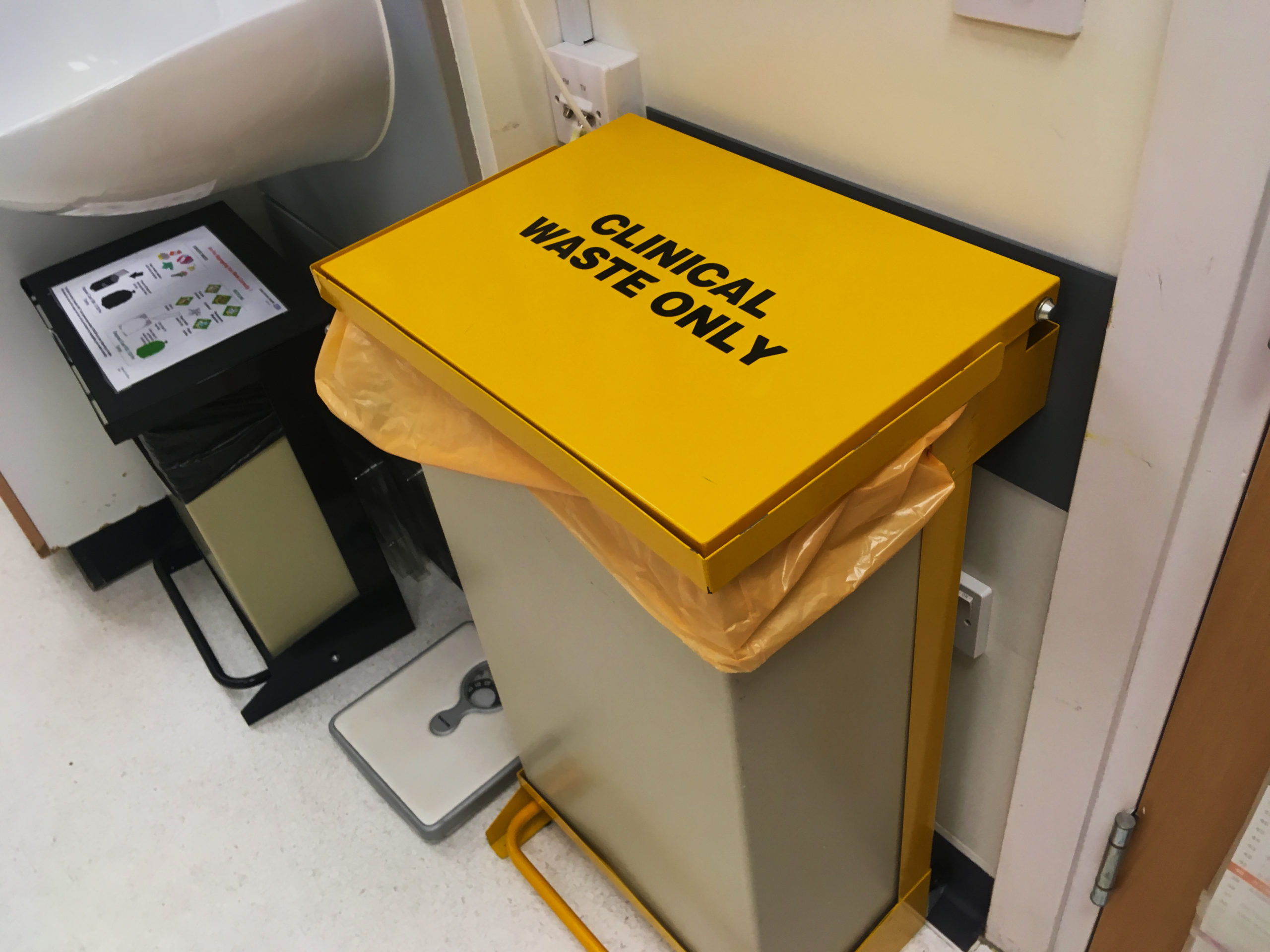The Environment Agency has insisted that clinical waste must be stored and handled in a building, under new healthcare waste management guidance due to be published shortly.
The regulator said the measure, put out for consultation last summer as part of draft guidance, would become a requirement despite concerns over cost.
But, the Agency said it had revised some of its other proposals relating to management of clinical waste in response to industry feedback.
This includes extending the maximum storage time for offensive and clinical waste where stored in a building from 7 to 14 days and removing requirement to check the labelling on all loose packaged items received.
The actions emerged in a summary of consultation responses document published by the Agency this month (February 2020). The consultation on the draft guidance was held in June 2019.
Storage
With regards to the storage of healthcare waste in a building, the majority of consultation respondents (13 out of 15) said they felt that this was not necessary and that it represented ‘gold plating’. Many feared it would require “significant investment” to implement and called for a risk-based approach instead.
But, the Agency dug its heels in and said “We remain of the view that the storage of clinical waste in a building, is an appropriate measure.”
It explained: “Storage in a building helps to ensure that hazardous chemical and infectious wastes are stored safely and securely.
“It also improves the control of potential emissions (including odour), prevention of pests, containment of leaks and spillages, and surface disinfection.”
The Agency said it expected new facilities to be designed with this in mind and that existing facilities would need to achieve this “to an agreed timeframe”, unless where not economically or technically viable.
In these cases, the Agency said that facilities would have to demonstrate an equivalent level of environmental protection.
It added that facilities would be able to store non-hazardous offensive waste and treated waste output materials (for example, autoclave floc) either in a building or outside.
Revision
Despite this, the Agency said it had taken the consultation responses into account by revising the appropriate measures for waste storage.
And, with regards to storage times, it said it had increased the maximum storage duration for infection and offensive waste when stored in a building from 7 to 14 days. The maximum duration will remain seven days for waste stored outside.
“The guidance will also be revised to state that anatomical waste can be stored up to 14 days in refrigerated storage, and no more than 24 house if without refrigeration (or 72 hours if over a weekend), provided there are no odour issues.”
The Agency also said it had relaxed plans to require waste carts to be arranged in rows in order to facilitate inspection amid concerns this could ‘significantly’ reduce storage capacity at site.
Instead, it said that all bulk waste containers “must be stored in a way that allows safe and easy access for inspection at all times”.
Elsewhere, the Agency said it had removed the specific requirement to check labelling on all loose packaged items received over fears this would be onerous. It has replaced it with a requirement to ensure that all waste can be “tracked back to relevant waste acceptance records and documentation.”
And, the regulator said it had revised the measures contained in the guidance for the storage of odorous wastes, putting the onus on the operator to propose what measures are appropriate.
‘Expensive’
One respondent claimed that the draft guidance would make “healthcare waste more difficult and expensive to manage – requiring new abatement, buildings, doors, storing less waste. It increases the risk of companies pulling out of the market”.
However, the Agency said that it had taken these comments into account and made amendments where necessary.
The Agency said: “We have taken comments made about increased costs into account as a result of this consultation. For example, on the provision of storage buildings at existing facilities and odour abatement measures, where operators can justify alternative measures.
It added that operators would be able to propose alternative measures to those in the guidance if they achieve the same level of environmental protection, or provide an explanation of why specific measures are not relevant.
It added: “Where the appropriate measures set out in the guidance cannot be met at an existing facility, the operator and the Environment Agency can agree a timetable for implementing improvements to meet the relevant requirements. We can take into account the extent and cost of the changes required.”
The post Operators to be ‘required’ to store clinical waste inside appeared first on letsrecycle.com.
Source: letsrecycle.com Waste Managment



